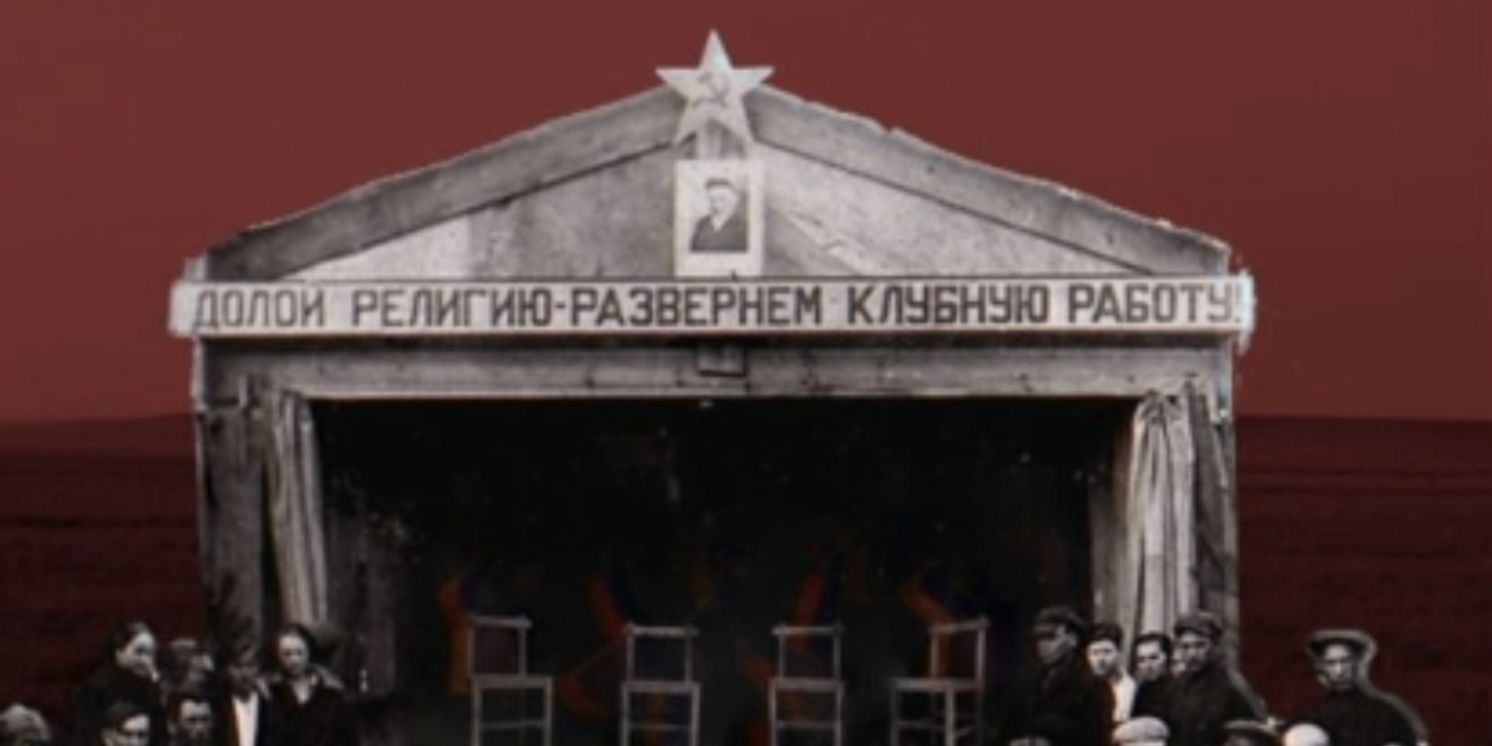
![]()
I wanted to love Theatre of Gulags so badly. As a fan of immersive theatre and history, it was set up to be a highlight of my time at the VAULT Festival - It was one of the first that made it on my list of shows I simply had to review.
Unfortunately, even with my desire to learn and my love for immersive theatre, the show was confusing and left me frustrated. It is one thing to have purposeful confusion, in which the audience is meant to question what they are seeing - It is another thing entirely when your audience has no idea what to do or how to even move on to the next scene.
The layout of the show is an interesting concept - there are curtains on each side of the venue and four different "sets", one on each side of the curtain. The first two were desks and chairs with some props to reflect the people who were portrayed, the third was simply two wooden bunkbeds, and the fourth was a baby nursery. At each "station", the audience would watch a video projection on the curtain that included a photograph of the person whose story was being told, text summarising their life and time in the Gulags,
Even though the concept was interesting, the execution was poor and took away from the rest of the show. The main issue for me was the number of audience members - there were simply too many to be able to comfortably move around and see everything. At one point, I saw an audience member stand up on a prop chair in order to catch even a glimpse of the projections on the other side of the room and found myself tempted to do the same.
One scene was even in another language, meaning if your view of the curtain was blocked by other audience members, then you would not understand a thing that was happening. The curtains were also wavy, making the images and text distorted and difficult to understand, especially when standing toward the back.
One aspect of the show that stood out was its clear dedication to research and telling the stories of those within the Gulags. The creator, Anya Ostrovskaia, must be given credit for her passion for and knowledge of the history of the USSR and the atrocities committed.
Theatre of Gulags ends with an actual theatre show, in which three of the actors who had appeared in the videos portray their characters on stage. The director is helping the actors work through a scene in Shakespeare's King Lear between Lear and the Fool. I tried to get invested in this part of the show but could barely hear the actors and struggled to understand what was going on.
The "show of truth", as it claimed to be, failed to help me understand more of the story, only summarising what had already been presented in the installations throughout the Cavern. At the end of the play, there is a scene in which two of the actors dance together and the lights fade, but the audience sat in silence, unsure of whether the show had ended or not, left staring at the dancing pair in the dark.
Ultimately, Theatre of Gulags certainly attempts to be immersive but fails the draw the audience in, leaving them in a state of confusion. Even with all of its setbacks, I found myself fascinated by the concept of the show and would love to see it improved upon in the future. There is certainly potential within the stories of the Gulags and those who created art within it. Unfortunately, in this production, I only found myself frustrated at what could have been, staring at a distorted video on a curtain and listening to a language that I could not understand.
Theatre of Gulags ran at the VAULT Festival on 26 February in the Cavern at The Vaults
Photo Credit: VAULT Festival
VAULT Festival has been left without a venue for next year. You can contribute to the #SaveVAULT campaign here.
Reader Reviews
Videos

